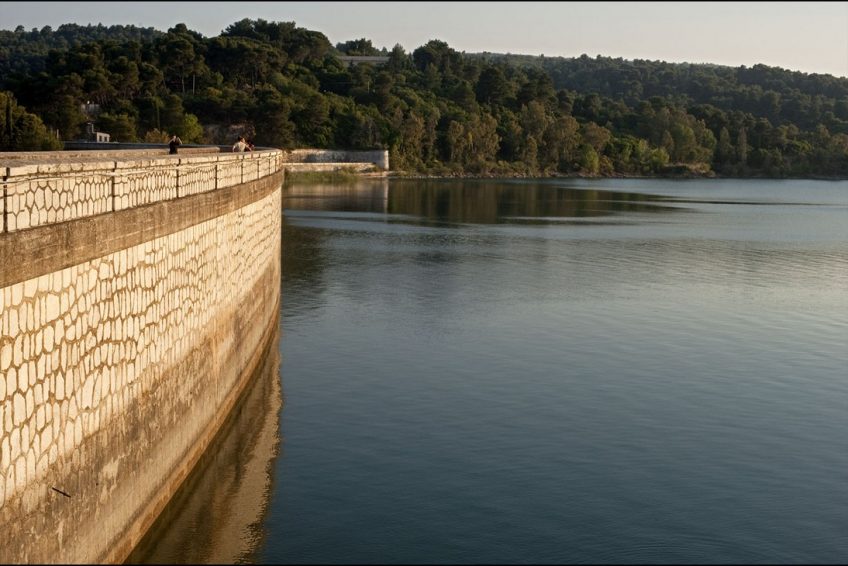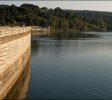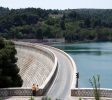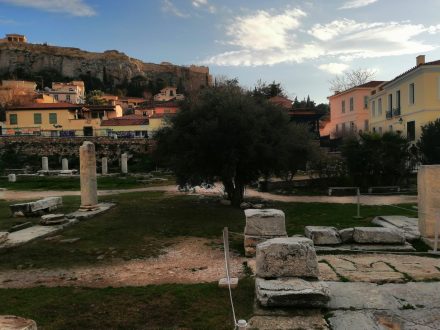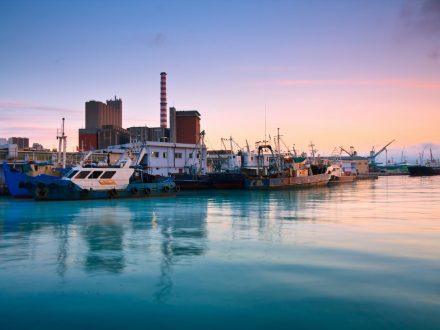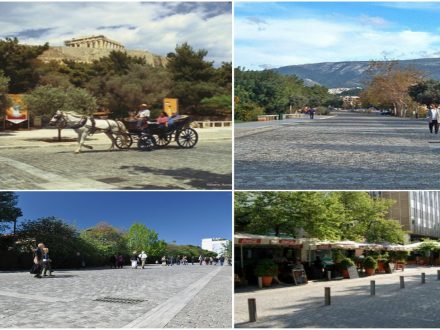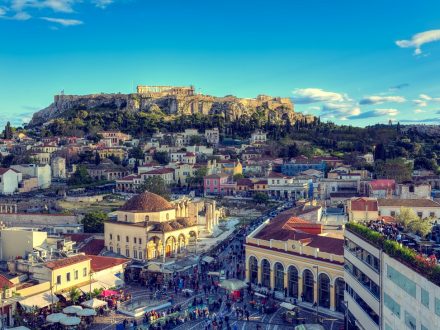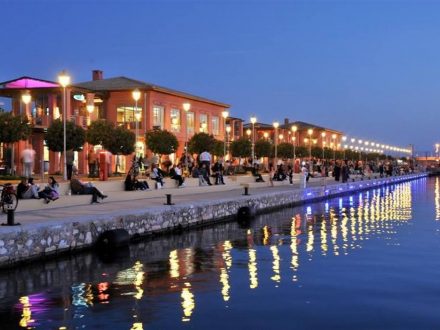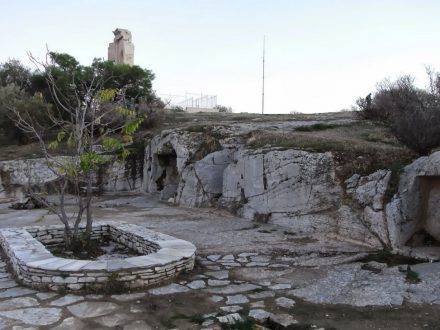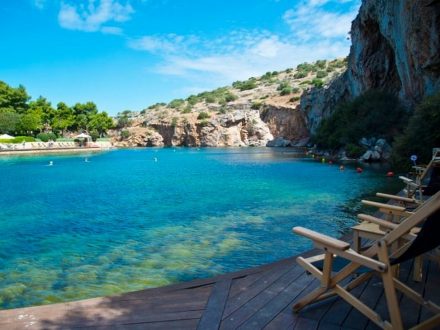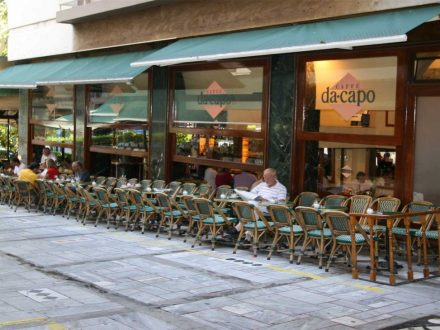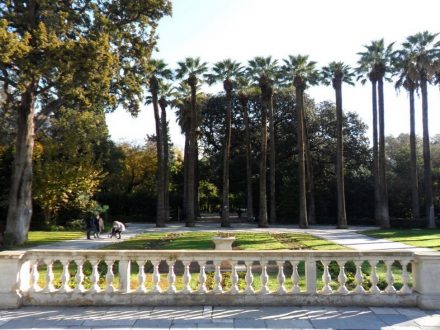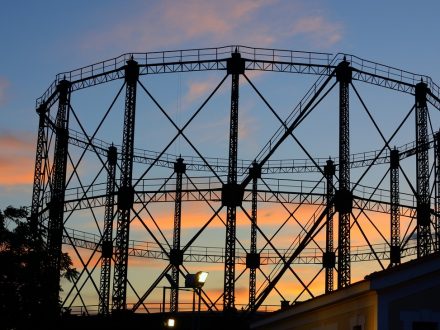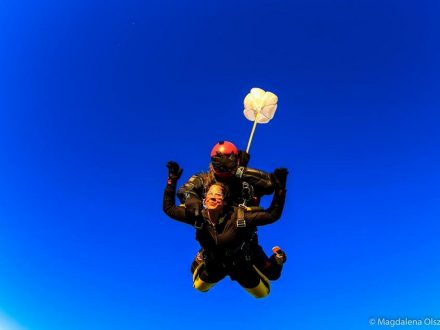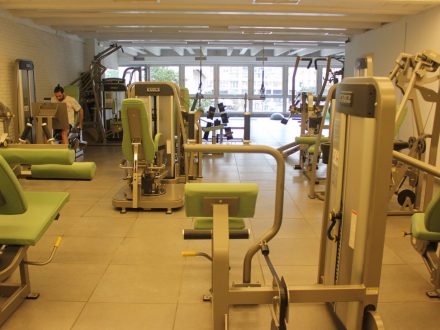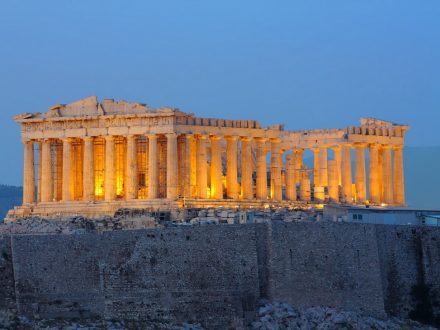Marathon Lake
Lake Marathon, Kapandriti 190 14, GreeceLake Marathon or the Marathon Reservoir is a water supply reservoir formed from the construction of Marathon Dam at the junction of Charadros and Varnavas Torrents near the town of Marathon, Greece. It was the primary water supply for Athens from 1931, when it became operational, until 1959. In 1959 water from Lake Yliki became available, and water from Mornos Reservoir became available in 1981.
The area of the lake at the height of the spillway of the dam is 2.45 square kilometres, the maximum depth is 54 m, the lake concentrates water from a drainage basin of 118 square kilometres with an average runoff of 14,400,000 m³ per year in an average rainfall of 580 mm per year, the average inbound volume is 12,000,000 m³ per year and the maximum reservoir capacity is 41,000,000 m³ (effective volume 34,000,000 m³).
The dam has a maximum height (from foundation to crest) of 54 m, a maximum width of 28 m at the base and 4.5 m at the crest. Its length is 285 m. The crest is 227 m above sea level, the toe is 173 m above sea level, and the spillway is 223 m above sea level. The spillway disgorges 520 m³/s. The dam is constructed from concrete and is a gravity dam. It is unique worldwide because its external cladding of white pentelikon marble is the same marble used in construction of the Parthenon and the other buildings in the Acropolis. The dam was constructed by the American firm ULEN (which had, in a BOT type contract, the ownership of the water supply company of Athens until 1974). It was constructed to meet the increased water demand caused by the rapid population increase in the Athens area following the huge influx of refugees from Asia Minor during and after the end of Greco-Turkish War (1919–1922). The construction lasted from 1926 to 1929.
Located 42 kilometres from Athens, this is where the annual Athens Classic Marathon is held to commemorate Spyros Louis’ famous victory at the first modern Olympic Games held in Athens in 1896.With 12 kilometres of sandy beach and lush greenery, Marathon is home to the only artificial lake in Attica. A result of the Marathon Dam, the reservoir supplied water to the capital until 1959.Today, the lake shore is home to an amusement park and paths ideal for walking, hiking and bicycling. Here you’ll find such renowned monuments as the Tumulus, the Museum, the Marathon Stadium, the Enoe Gorge and the Schinias Wetlands.
Reference: Wikipedia, athensattika.gr
Lake Marathon or the Marathon Reservoir is a water supply reservoir formed from the construction of Marathon Dam at the junction of Charadros and Varnavas Torrents near the town of Marathon, Greece. It was the primary water supply for Athens from 1931, when it became operational, until 1959. In 1959 water from Lake Yliki became available, and water from Mornos Reservoir became available in 1981.
The area of the lake at the height of the spillway of the dam is 2.45 square kilometres, the maximum depth is 54 m, the lake concentrates water from a drainage basin of 118 square kilometres with an average runoff of 14,400,000 m³ per year in an average rainfall of 580 mm per year, the average inbound volume is 12,000,000 m³ per year and the maximum reservoir capacity is 41,000,000 m³ (effective volume 34,000,000 m³).
The dam has a maximum height (from foundation to crest) of 54 m, a maximum width of 28 m at the base and 4.5 m at the crest. Its length is 285 m. The crest is 227 m above sea level, the toe is 173 m above sea level, and the spillway is 223 m above sea level. The spillway disgorges 520 m³/s. The dam is constructed from concrete and is a gravity dam. It is unique worldwide because its external cladding of white pentelikon marble is the same marble used in construction of the Parthenon and the other buildings in the Acropolis. The dam was constructed by the American firm ULEN (which had, in a BOT type contract, the ownership of the water supply company of Athens until 1974). It was constructed to meet the increased water demand caused by the rapid population increase in the Athens area following the huge influx of refugees from Asia Minor during and after the end of Greco-Turkish War (1919–1922). The construction lasted from 1926 to 1929.
Located 42 kilometres from Athens, this is where the annual Athens Classic Marathon is held to commemorate Spyros Louis’ famous victory at the first modern Olympic Games held in Athens in 1896.With 12 kilometres of sandy beach and lush greenery, Marathon is home to the only artificial lake in Attica. A result of the Marathon Dam, the reservoir supplied water to the capital until 1959.Today, the lake shore is home to an amusement park and paths ideal for walking, hiking and bicycling. Here you’ll find such renowned monuments as the Tumulus, the Museum, the Marathon Stadium, the Enoe Gorge and the Schinias Wetlands.
Reference: Wikipedia, athensattika.gr
 Lina GavraIrodotou 17, Athina 106 73, Greece
Lina GavraIrodotou 17, Athina 106 73, Greece Via PiadaAgias Irinis 13, Athina 105 51, Gr...
Via PiadaAgias Irinis 13, Athina 105 51, Gr... Wabi SabiKaniggos 10, Athina 106 77, Greece
Wabi SabiKaniggos 10, Athina 106 77, Greece MusesAdrianou 13, Athina 105 55, Greece
MusesAdrianou 13, Athina 105 55, Greece BrunelloLoukianou 21, Athina 106 75, Greec...
BrunelloLoukianou 21, Athina 106 75, Greec... Barley CargoKolokotroni 6, Athina 105 61, Gree...
Barley CargoKolokotroni 6, Athina 105 61, Gree... La EsquinaCharitos 43, Athina 106 73, Greece
La EsquinaCharitos 43, Athina 106 73, Greece Alexander The GreatMeg. Alexandrou 3, Athina 104 37, ...
Alexander The GreatMeg. Alexandrou 3, Athina 104 37, ... GPK S.A. Foreign ExchangeAgiou Konstantinou 6, Athina 104 3...
GPK S.A. Foreign ExchangeAgiou Konstantinou 6, Athina 104 3... Bock BeerDonta 9, Athina 117 43, Greece
Bock BeerDonta 9, Athina 117 43, Greece


